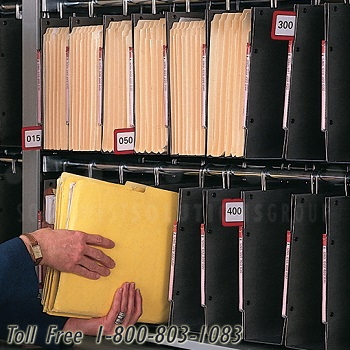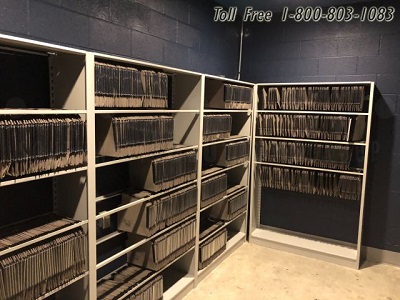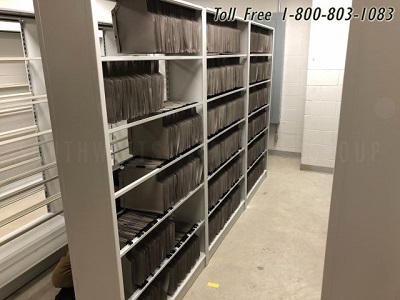 Companies in every industry need help to maintain and organize their file systems more effectively and efficiently. Experimenting with multiple filing solutions lead many companies to use open file shelving with color-coded end tabs to increase efficiencies. Moving in this direction also allows companies and organizations to embrace space-saving benefits.
Companies in every industry need help to maintain and organize their file systems more effectively and efficiently. Experimenting with multiple filing solutions lead many companies to use open file shelving with color-coded end tabs to increase efficiencies. Moving in this direction also allows companies and organizations to embrace space-saving benefits.
Understanding Direct Transfer Filing Systems
Direct Transfer Filing Systems are an excellent alternative to traditional filing systems. The main reason is that it can hold legal and letter-sized top-tabbed and side or end tab files. This system design’s originality means that users have the same capacity as a traditional shelving system, but with additional accessibility, dividers, and tri-optic color-coded indexing.
A Direct File Transfer System has designs that are specifically for filing the following examples:
- Annual reports
- Archival collections
- Clipping files
- Contract files
- Customer files
- Financial files
- Government documents
- Historical collections
- Sheet Music
- Journals
- Magazines and periodicals
- Medical records
- Newsletters and newspapers
Why Facilities Should Implement Direct File Transfer Systems
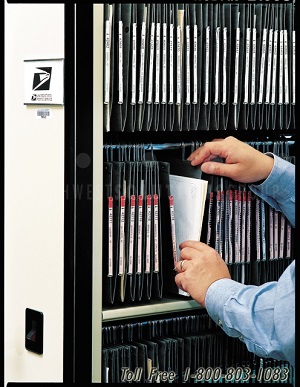
When facilities implement Direct File Transfer Systems, that action gives the company owners opportunities to reduce energy costs and save money. Because companies are directly transferring their files into organized open shelving systems, they can fit approximately three times the number of files within half of their floor space.
How Filing Systems Increase Efficiency
Beyond that of this system’s visual appeal, Direct Transfer Filing Systems are quick and easy to convert. There’s no longer the need to spend a significant amount of time converting an existing filing system into one that’s color-coded and using an end tab.
For example, when companies keep their existing filing system and want to use color-coding, they would have to purchase new folders and color-coded labels for every record they’re storing. The process would also involve physically removing documents from old file folders and putting them into new ones. So, it isn’t uncommon for companies to believe that a full-file conversion takes too long and costs too much money.
Using our Direct Filing Systems increases efficiency because they utilize hanging compartments that operate similarly to top tab filing systems. Instead, these direct filing systems feature a magnified view lens on one side of the folder instead of its top. That way, companies can store their existing manilla file folders inside vertical shelving units without having to alter their current contents or folders.
About Color-Keyed Indexing
Color-keyed indexing means that the Direct File Transfer system has color-coding. That way, organizations can adapt this system to any pre-existing coding situation, be it alphabetic, numeric, alphanumeric, and more. In addition to finding thirteen color labels available, companies can also request custom colors if needed. There are also opportunities to add scannable codes.
Color-keyed indexing is specifically for the following:
- Primary guide: This is the top position, and it indicates significant indexing breaks
- Guide snapper: This feature allows guides to snap to the first compartment in every row
- 6″ magnified labels: These labels tell users the contents of every compartment
- Secondary guide: In this area, users can identify minor indexing breaks
A-Z Print Label Printing Software’s Ease of Use
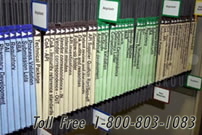
This ease of use extends to users searching within a label document to make changes or replace text as needed. For example, at the end of each year, they can change every instance of 2020 to 2021. They’ll also find various ways to format text, adjust column widths, and adjust orientation before printing.
The Benefits of Direct Transfer Filing Systems
One of the most substantial benefits of using Direct File Transfer System is that organizations can convert or retrofit their existing shelving systems. They can complete this process by removing the old shelving from the unit. Then, drop-in each of the custom-fitted rail assemblies. Taking advantage of this benefit means companies spend less time and labor costs on conversions. It also means they don’t have to pay as much to purchase new equipment.
Another benefit to this system is that companies have complete control over how much they want to convert. What that means is they can choose how many rows they want to add at a given time. So, if a company needs a few rows or a complete system, they can make these decisions accordingly.
Additional benefits include:
- There’s a “Current Guide” marker that helps save users a significant amount of time because it marks the most recent documents.
- Three levels of indexing mean that users can identify documents accurately and immediately.
- Users can store bound materials on top of the file compartments without compromising its support or integrity.
 Office Storage Product Prices
Office Storage Product Prices
See specifications and pricing for sliding mobile shelving, rotary cabinets, file cabinets, security shutters, and more.
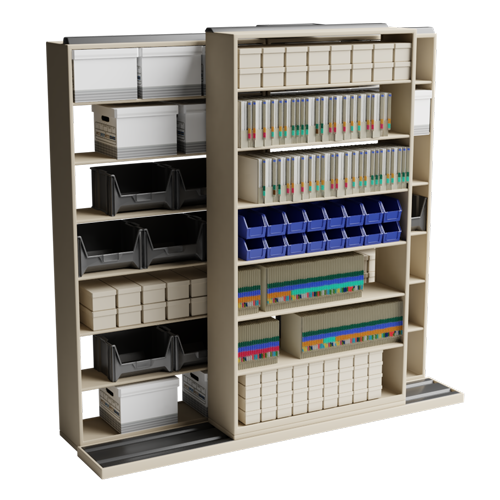
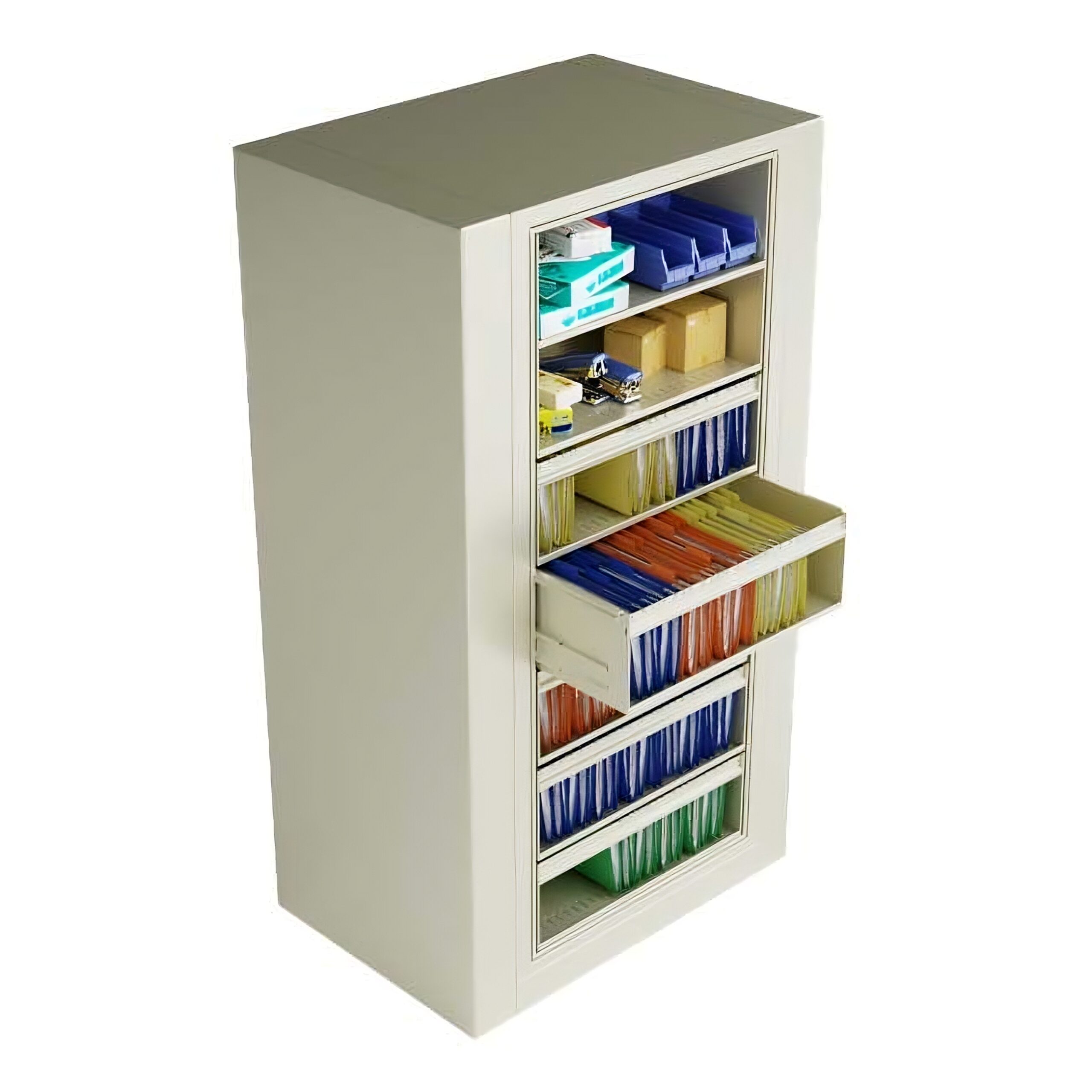
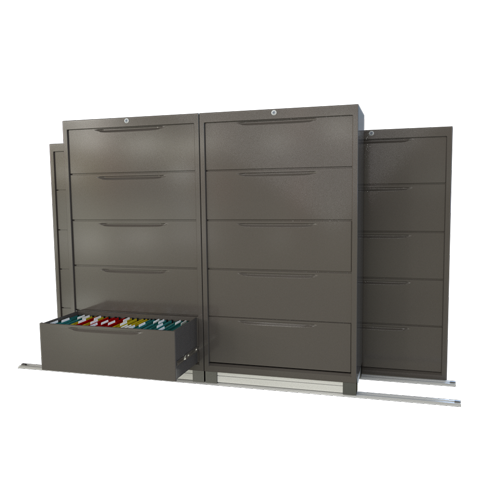
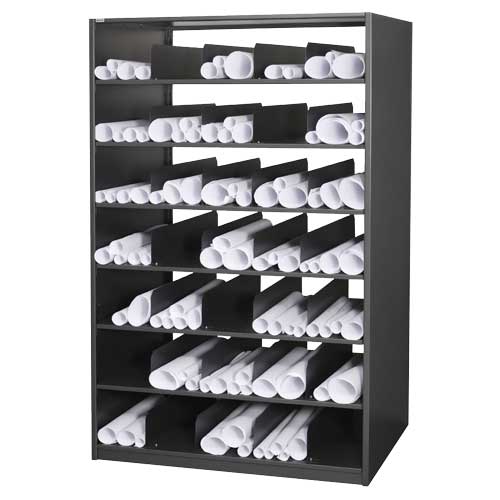
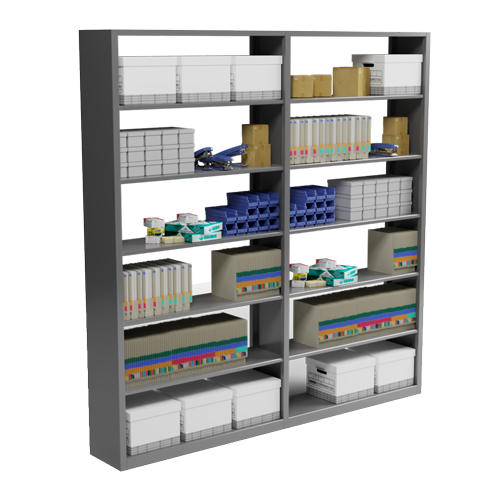
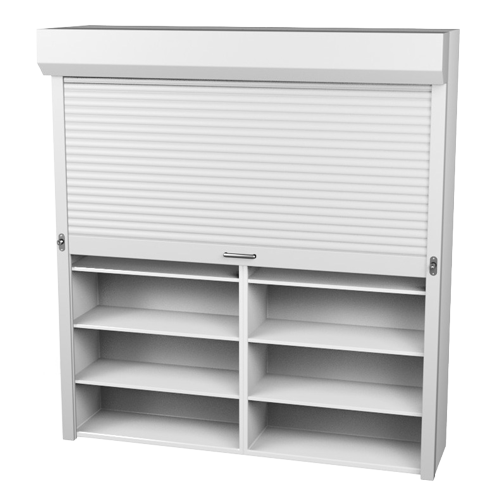
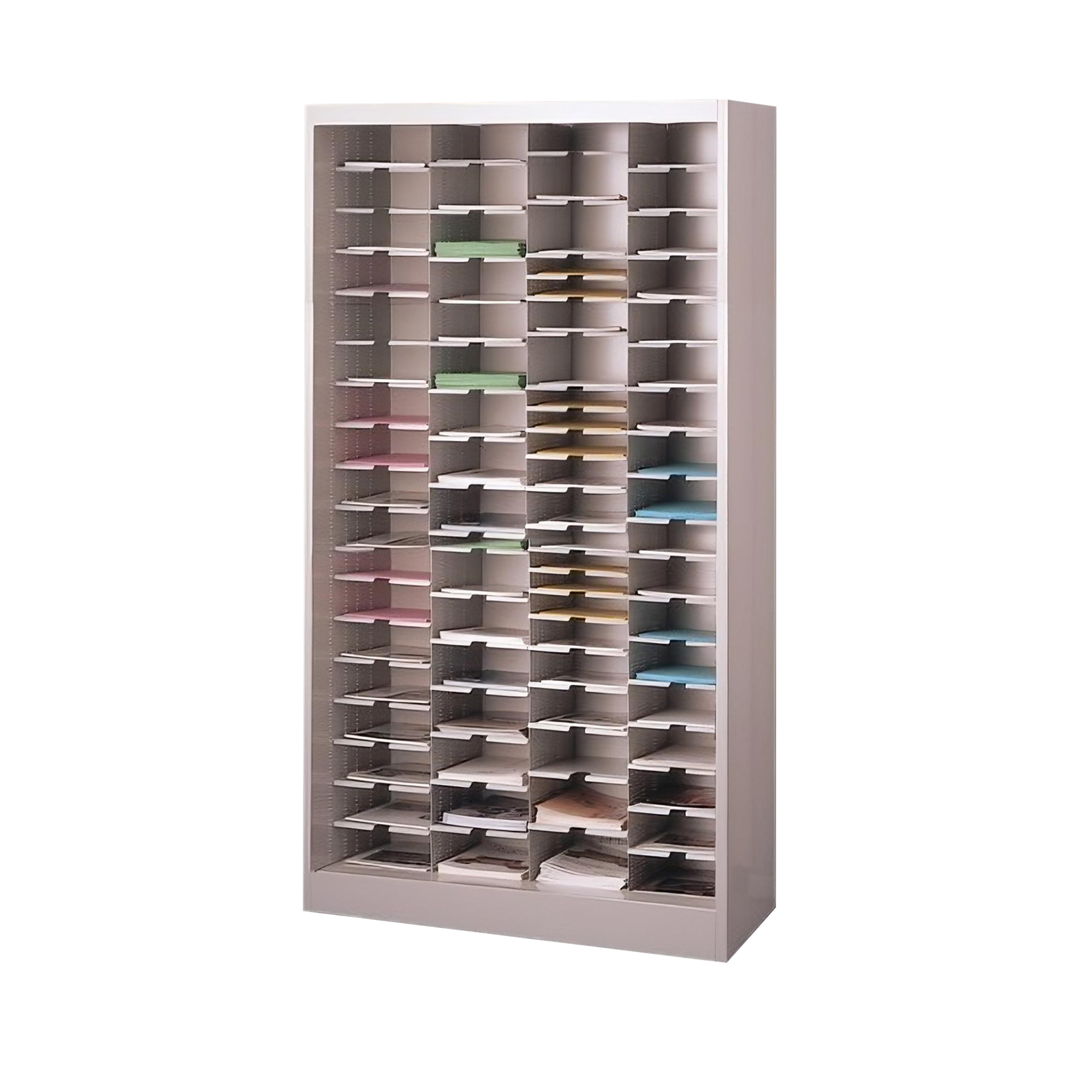

Features of Direct File Transfer Systems
Despite living in the “digital age,” companies must still keep large quantities of documents and other paperwork. This reality translates into the need for a flexible and easy-to-use storage and retrieval system. That system must also meet the indexing and retrieval requirements set forth by the company or organization. That becomes even more critical when those materials are unbound.
The suspended design feature is an ideal solution for filing bulky materials like newspapers, periodicals, and other documents. If organizations must file loose or unbound materials, they can easily do so thanks to this file system’s exclusive linked-compartment design. That way, it’s possible to keep these materials upright and protect them from damage.
That design extends to organizations that need lateral and vertical document storage. Because the systems combine these two storage and retrieval needs, they utilize a traditional shelving unit’s entire interior capacity. That means, when organizations implement this system, they can recover up to 7% of their floor space.
Additional features include:
- Box-base compartments range between one-inch to 4.5″ capacities.
- Compartments are pH neutral to prevent damage to documents.
- Compartment sizes range from 7 ½” x 12″ to 24″ x 40″
- Every compartment can hold between 20 and 25 pounds.
- Expansion capabilities accommodate materials from one sheet of paper to approximately three inches.
- Flexible v-base cradle contents without wasting space
- Manufacturer’s 10-year warranty
Technical Specifications and Design
 Click on the Oblique folder part number below for pricing
Click on the Oblique folder part number below for pricing
As the need for information management continues to grow, so does the need for better-designed material-handling systems. Under most circumstances, companies turn to an in-house engineering team for file transfer solutions. Architects and designers provide innovative file storage and retrieval system solutions to athletes, colleges, hospitals, law enforcement agencies, libraries, military professionals, and more.
General Technical Specifications:
- Box-base or V-base design
- Maximum capacities for V-base designs range between 2″ and 4.”
- Maximum capacities for Box-base designs range between 1.19″ and 3.125.”
- Oversized document compartments
Innovative Filing Solutions
For over five decades, companies have been turning to Southwest Solutions Group for filing and records management solutions. The Direct File Transfer System is the first hanging file compartment introduced to the United States. Since then, companies can continue finding innovative solutions to manage their document storage. The technical specifications for each vary by height, weight, storage capacity, and more. Here are a couple of examples:
Model: UFLT V-Base Uni-file Letter Size Hanging File Folder Compartments
- Capacity: Holds 10 lbs per Folder (Static Load)
- Compatibility: Part# 7750279 Workfile Pockets, B Series
- Construction: 220-gram kraft manila
- Dimensions: 11-5/8″ Deep x 10-1/2″ High V-Base
- Opening: Holds Up to 2″ Capacity
- Type: V-Base
- Weight: 7 pounds
Model: UFLG30 Box Base Uni-file Legal Size Hanging File Folder Compartments
- Capacity: Holds 10 lbs per Folder (Static Load)
- Compatibility: Part# 7750279 Workfile Pockets, B Series
- Construction: 220-gram kraft manilla
- Dimensions: 14-5/8″ Deep x 10-1/2″ High 1.19″ Box Base
- Opening: Holds Up to 1.19″ Capacity
- Type: Box Base
- Weight: 9 pounds
With expert designers on-staff, it’s possible to integrate Direct File Transfer Systems into a company’s existing traditional shelving units. Implementing a hanging filing system into a company’s existing systems typically doesn’t require a significant amount of architectural processes, mainly if it uses existing open shelving. However, if a new system is necessary, the process involves several architectural and design phases.
Architectural and design phases:
- Spec creation after evaluating the location of the open shelving units
- CAD drawings
- Presentation of plans
- New project installation or integration with existing systems
Find Out More About Direct File Transfer Systems
Southwest Solutions provides innovative file and file management solutions to companies of any size and within any industry. To get started, call us at 800-803-1083 or send us a message today. They’ll help you decide if you should start with a few rows or integrate a full modification into your file storage and retrieval system.

